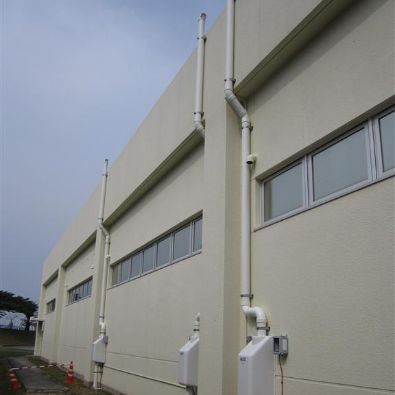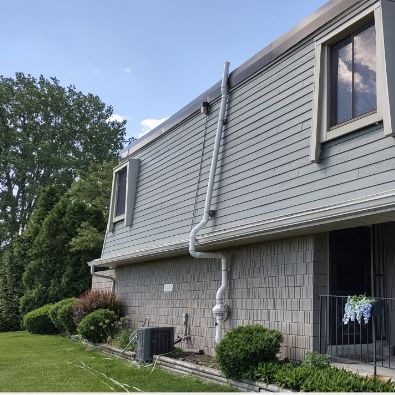Commercial Radon Mitigation
At All Iowa Radon we pride ourselves in customer satisfaction!
Call us today or fill out the form below for a FREE Quote!
319-231-3963
The Importance of Commercial Radon Mitigation in Clive, Iowa
Radon is a naturally occurring, odorless, colorless, and tasteless gas that can be found in the soil and rocks beneath homes and businesses. It is the second leading cause of lung cancer in the United States, and it is especially prevalent in Clive, Iowa. That’s why it’s so important for businesses in Clive to invest in commercial radon mitigation services.Radon is created when uranium in the soil breaks down and releases radioactive particles into the air. These particles can enter buildings through cracks in the foundation, gaps around pipes, and other openings. Once inside, the radon gas can accumulate to dangerous levels.Commercial radon mitigation services can help reduce the risk of radon exposure in Clive businesses. These services involve sealing cracks and openings in the foundation, installing a radon mitigation system, and testing the air quality regularly.The radon mitigation system works by drawing the radon gas out of the building and releasing it into the atmosphere. This helps reduce the amount of radon gas in the building and keeps it at safe levels.Commercial radon mitigation services are an important investment for businesses in Clive, Iowa. Not only do they help reduce the risk of radon exposure, but they also help protect the health of employees and customers. Investing in radon mitigation services is a smart move for any business in Clive.At All Iowa Radon, we specialize in providing commercial radon mitigation services in Clive, Iowa. Our team of experienced professionals can help you identify potential radon sources, install a radon mitigation system, and test the air quality regularly. Contact us today to learn more about how we can help protect your business from radon exposure.Call Now For A Free Commercial Radon Assessment 319-231-4017
Clive, Iowa is a city located in Polk County, Iowa. It is a suburb of Des Moines, the state capital. The population of Clive was estimated to be 17,945 in 2019. Clive is known for its excellent schools, parks, and recreational activities. It is also home to the Clive Aquatic Center, a popular destination for swimming and other water activities.
Clive was founded in 1882 and was originally named “Cloverdale”. The name was changed to Clive in 1887 in honor of the British General Robert Clive. Clive was incorporated as a city in 1956.
Clive is home to the Clive Greenbelt Trail, a 5.5 mile long trail that runs through the city. The trail is popular with cyclists, runners, and walkers. It is also home to the Clive Festival of Arts, an annual event that features art, music, and food.
Clive is also home to the Clive Public Library, which was established in 1965. The library offers a variety of services, including books, magazines, and DVDs. It also offers a variety of programs for children and adults.
Clive is home to several parks, including the Clive Aquatic Center, the Clive Greenbelt Trail, and the Clive Public Library. It is also home to the Clive Historical Museum, which features artifacts from the city’s history.
Clive is a great place to live and work. It is a safe and friendly community with excellent schools, parks, and recreational activities. It is also home to a variety of businesses, including restaurants, shops, and entertainment venues.
The History of Radon in Clive, Iowa
Radon is a naturally occurring, colorless, odorless, and tasteless gas that is produced by the breakdown of uranium in soil, rock, and water. It is found in all parts of the world, including Clive, Iowa. Radon is the second leading cause of lung cancer in the United States, and it is important to understand the history of radon in Clive, Iowa in order to protect the health of its citizens.
Radon was first discovered in Clive, Iowa in the late 1980s. At that time, the Environmental Protection Agency (EPA) began to conduct tests to measure the levels of radon in the air. The results of these tests showed that the levels of radon in Clive, Iowa were higher than the EPA's recommended levels. This prompted the EPA to issue a health advisory in 1989, warning residents of Clive, Iowa about the potential health risks associated with radon exposure.
In response to the health advisory, the City of Clive, Iowa began to take steps to reduce the levels of radon in the air. The city implemented a radon mitigation program, which included the installation of radon-resistant features in new and existing homes, as well as the installation of radon-reducing systems in existing homes. The city also conducted additional testing to monitor the levels of radon in the air. The results of these tests showed that the levels of radon in Clive, Iowa had decreased significantly since the implementation of the radon mitigation program.
Today, the City of Clive, Iowa continues to monitor the levels of radon in the air and to take steps to reduce the levels of radon in the air. The city also provides information to residents about the health risks associated with radon exposure and how to reduce their risk of exposure. By understanding the history of radon in Clive, Iowa, residents can take steps to protect their health and the health of their families.
Contact Us For A Free Quote!
Our team of experts is ready to provide you with personalized guidance and deliver exceptional results.






